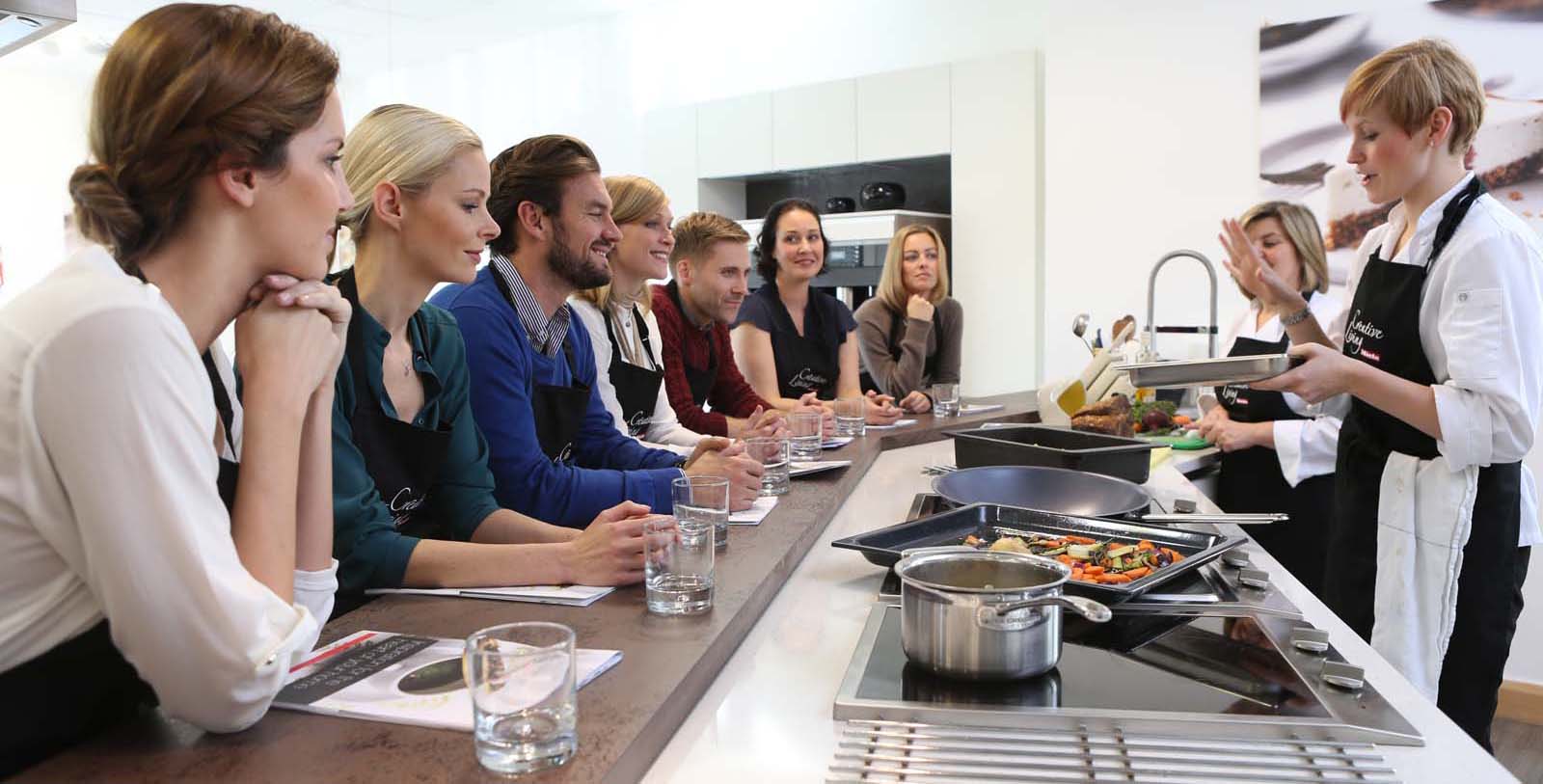It’s tempting to get home from a big shop and just cram everything into the fridge. Sometimes that’s a chore in itself, making sure everything fits and is easy to access. But there’s more to re-stocking your refrigerator than you may think. Having a well-organised fridge will not only make everything easier to find but it also keeps it fresher, reduces waste and saves money. To get things started, follow our top tips on how to organise your fridge.
Staying fresh
The most important factor is keeping food fresh by storing items at the recommended temperature to stop the growth of bacteria. As well as making you unwell bugs cause produce to deteriorate rapidly. So by reducing the temperature you reduce bacteria’s growth rate. Miele recommends setting the fridge to between 3˚C and 5˚C and the freezer to -18˚C for optimum conditions. Features such as Dynamic Cooling and PerfectFresh will also help keep ingredients in the best condition. This is why you should never re-freeze partially defrosted or defrosted food, as the once the temperature reaches above -10˚C, bacteria becomes active again. You can however re-freeze meals once they have been cooked, as high temperatures during cooking kill most bacteria.
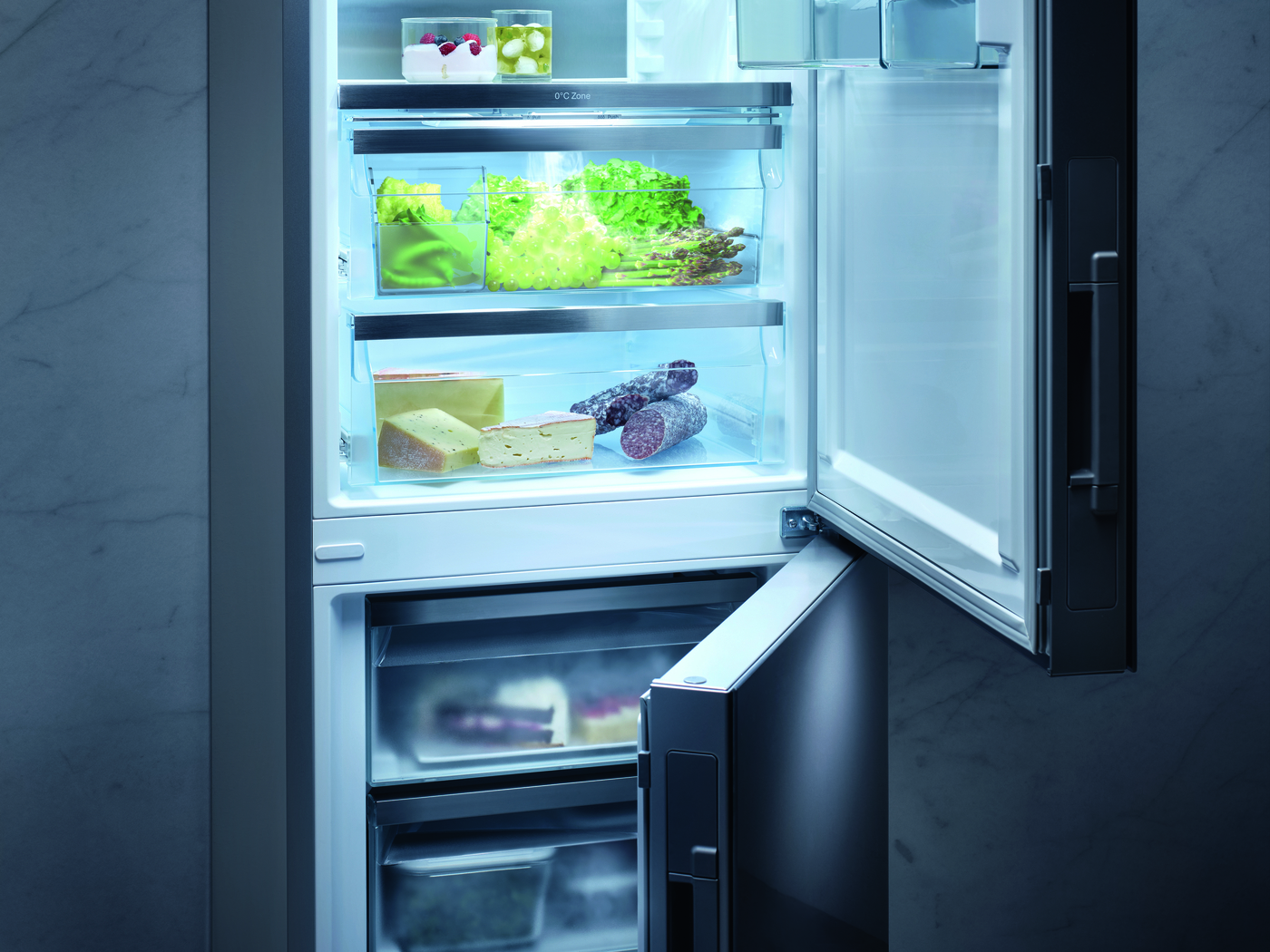
What goes where?
Instead of filling up depending on what fits where, use the shelves and drawers wisely to keep produce in its best condition for longer.
Upper shelf
Use the top half of the fridge for anything that doesn’t need cooking. This includes everything from sliced cooked ham and turkey to yoghurt, cheese and leftovers. Think deli items, snacks and prepared salad pots. Check the labels every now and then to make sure you move anything that should be eaten soon to the front. Keep longer ‘use by’ dates towards the back and rotate on a regular basis as you add new items. The reason these are top shelf is that they have a low risk of spoiling and the temperature tends to be a tad higher in the upper section. Another reason is that anything placed here at eye level will grab your attention more easily, hence why it’s good for snacks.
Middle shelf
This is ideal for dairy such as cheese, butter and yoghurt.
Bottom shelf
As it’s the coolest part of the fridge, this is where you need to keep raw food including meat and fish. Keep it wrapped or in its packaging to prevent any juices dripping. You can always pop a loose piece of meat on a plate to stop drips onto shelves or food below. This also reduces the risk of cross-contamination with other foods.
Bottom drawers
Miele’s PerfectFresh is designed to keep food fresh for longer. Ideal for meat, fish, dairy, fruit, vegetables and fresh herbs, some items can be stored in different ways. Asparagus and spring onions for instance should be kept with their stems in water. Spring onions will even keep on growing! Another good tip is to line the drawers with some kitchen roll. It makes it easier to keep them clean and you can just replace with new sheets every few weeks.
Door shelves
As it’s the warmest part of the fridge, use the door balconies for items with natural preservatives such as jams, chutneys, soft cheese and juice.
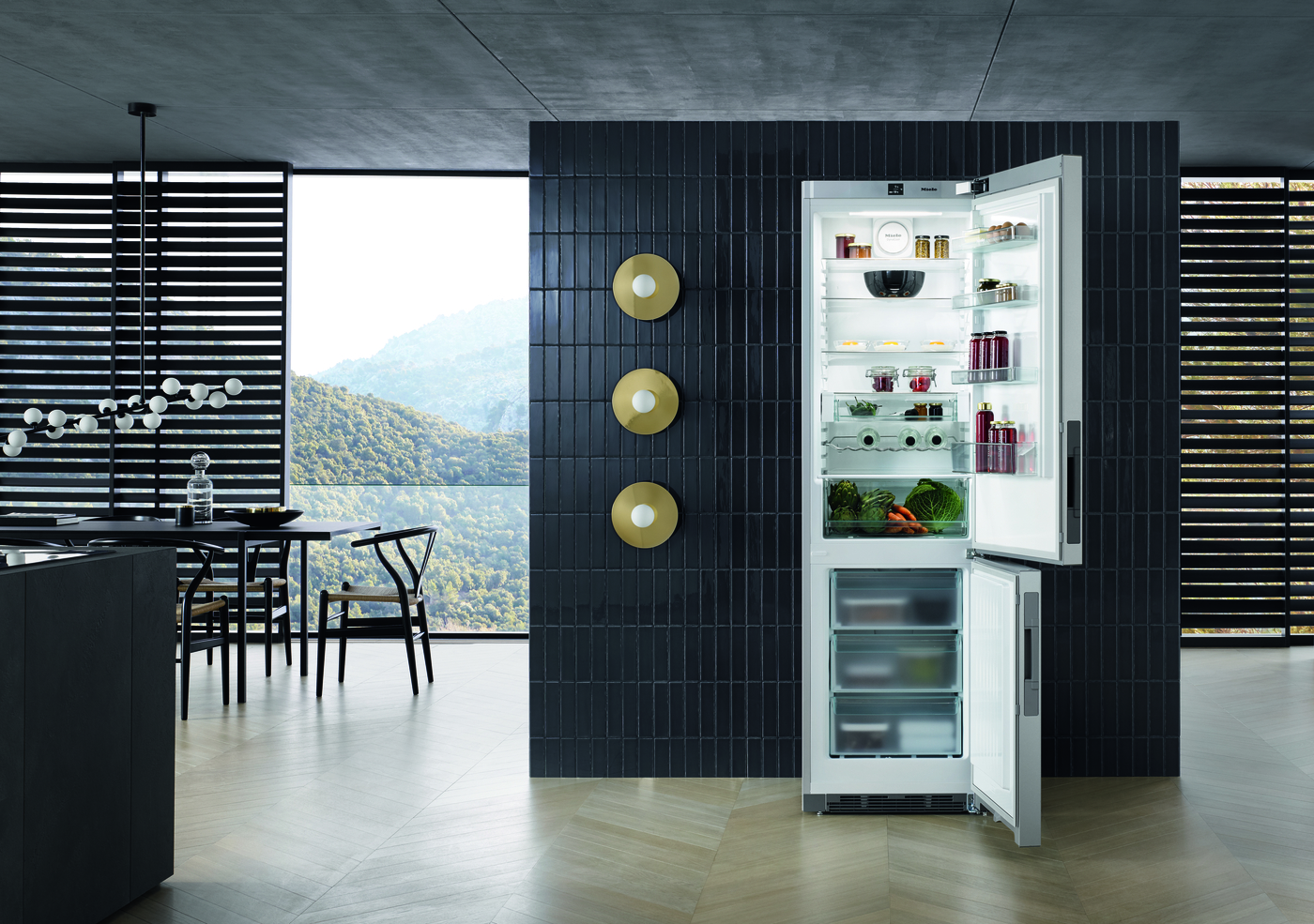
Top 10 tips for an organised fridge
-
When you can control the humidity in dedicated drawers, divide items depending on how much humidity they need. Apples, pears, avocados and most fruits don’t need much as they will ripen too quickly and go off. Leafy greens and herbs on the other hand do need high humidity to stay fresh and crisp.
-
Keep earlier ‘use by’ and ‘best before’ dates at the front of the fridge to prevent food wastage.
-
Condiments such as pickles, chutneys, jams, sauces and salad dressings have a longer shelf life so they can be stored in the door shelves.
-
Create an easily accessible refuel and snack zone for children on the bottom shelf. Keep it stocked with grab-and-go snacks such as yoghurts and carrot sticks for a healthy lifestyle.
-
Butter and soft cheeses don’t need to be in the coldest part of the fridge. The middle shelf is fine for dairy in general but softer cheeses are ok in the door.
-
The more the door is opened and the longer it’s kept open, the warmer the temperature. Also true if the fridge is crammed with too much food. So resist opening it more than is needed and keep a good airflow inside by reducing the amount of food.
-
Tomatoes lose all their flavour the minute you refrigerate them so keep at room temperature. If you have a glut to get rid of, slow roast in the oven and make into pasta sauce, cool then freeze.
-
Other items to keep out of the fridge include root vegetables, berries, stone and citrus fruits, bananas and avocados. Instead, keep in a brown paper bag in a cool, dark place.
-
Always defrost meat and fish in the fridge, never at room temperature. Bacteria grows as food gets warmer so keep it cool even when defrosting.
- Clean your fridge regularly.
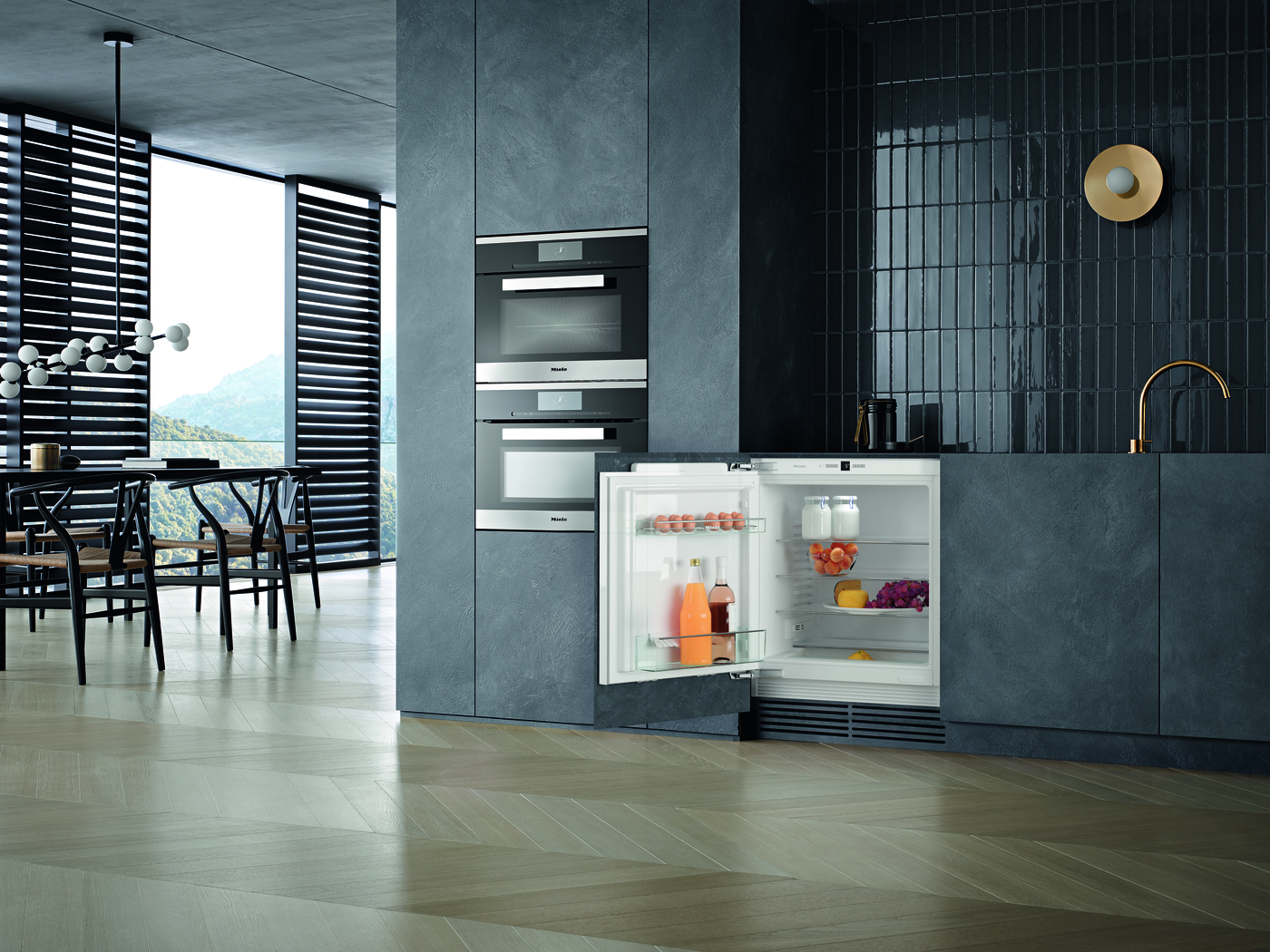
How to clean your fridge and freezer
Speaking of keeping your appliance spotless, here’s how to get the best results:
Before you begin, empty the contents and check ‘best before’ and ‘use by’ dates as well as looking for any damaged or split packaging. Throw out anything past its best and when you come to put the rest back, aim to place newer food towards the back or bottom so you’re more likely to use up older items first.
Use ice packs or a cool box to store things like fresh meats while you get on with the cleaning. Remove the shelves, door racks and vegetable drawers then wash in warm, soapy water.
Use washing-up liquid and a damp cloth to wipe out any food residue. You may find a little build-up in the drain hole at the back of the fridge and this can be cleaned with a bottle brush and warm soapy water. Wipe away excess moisture with a clean cloth, dry the shelves, racks and drawers then place back into the fridge before adding the food.
Spills should be wiped up immediately and a full clean done approximately once a month or more frequently if needed to avoid bacteria building up from food debris. Make sure to regularly check the drain hole at the back of the fridge as if this becomes clogged it can cause water to pool and ice to form. This can be cleared with a bottle brush and if necessary a small amount of hot water to flush it through. Just be careful not to use so much water that you flood the evaporator tray at the back.
Freezer drawers can be cleaned a drawer at a time to allow food to remain in the freezer.
Alternatively, pop frozen items in the fridge if you’re only doing a quick clean. Wash drawers with warm soapy water and use a cloth to remove crumbs and food residue.
Dry thoroughly before returning back to the freezer as you don’t want to create extra ice residue from any water left on them. Wipe down the inside of the cavity first to make sure everything is super-clean.
Once in a while let the stock in your freezer run low to allow you to clean it properly. If you have freezer drawers this can be done a drawer at a time to allow food to stay in the freezer, otherwise food can be removed to the fridge as long as you are quick. For anything like chicken it would be advisable to use ice-packs and a cool-bag/box to store it while you do this.
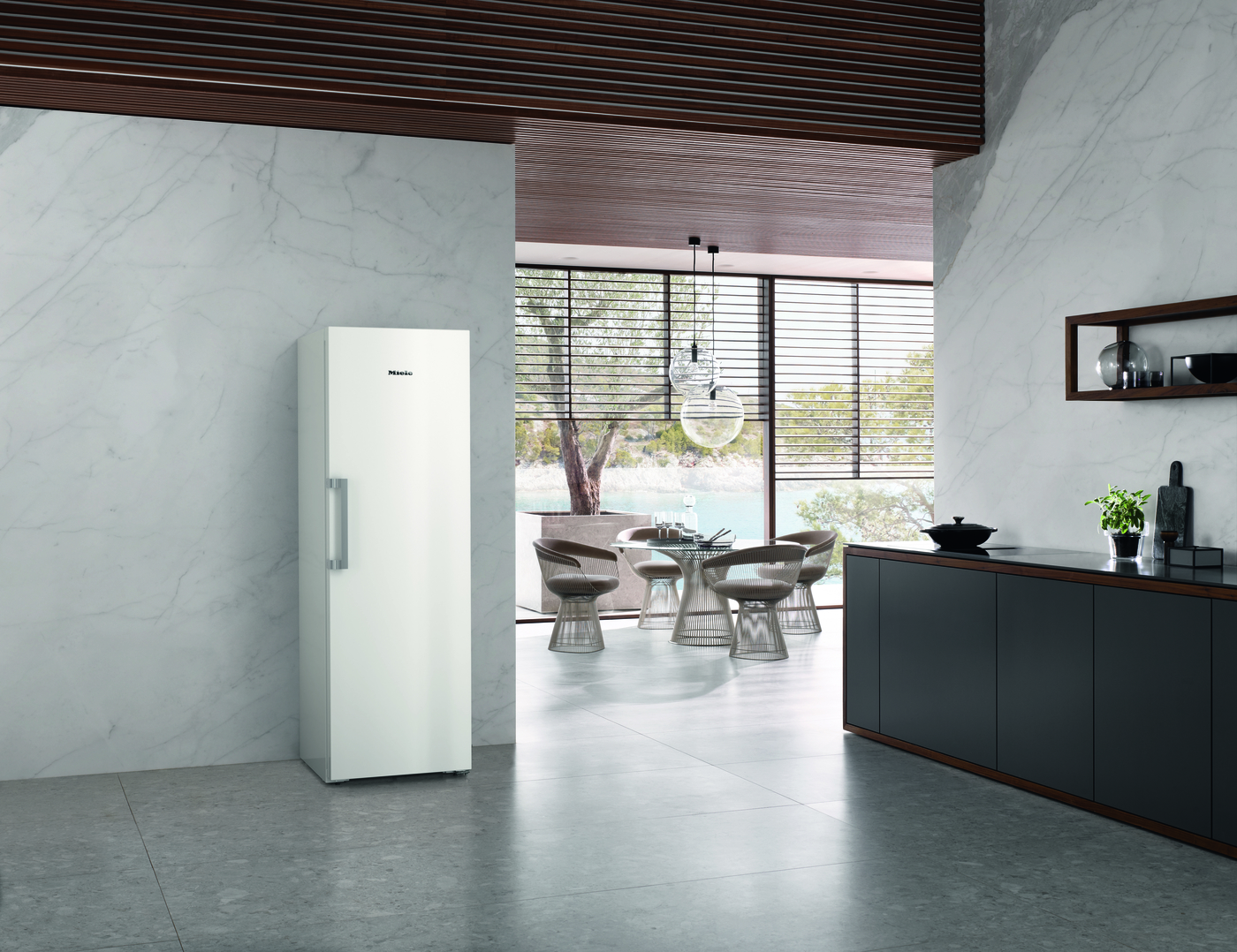

Planning Your Kitchen?
Discover the precision and accuracy of Miele with a complimentary 5 course taster menu that brings the appliances to life.

